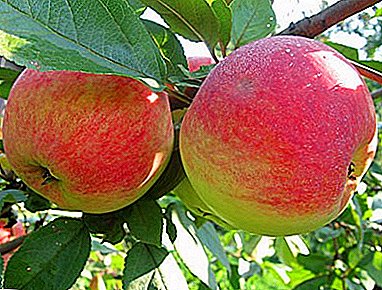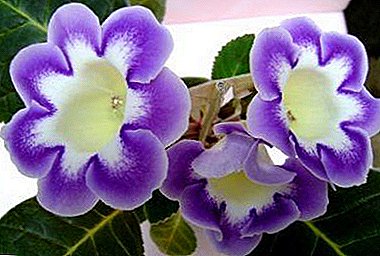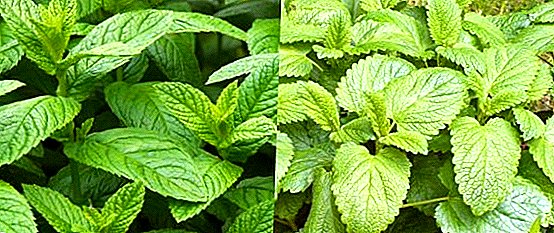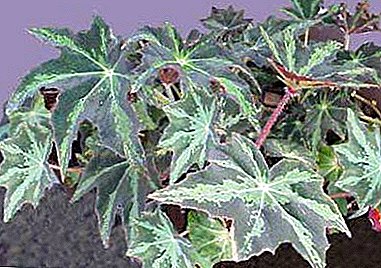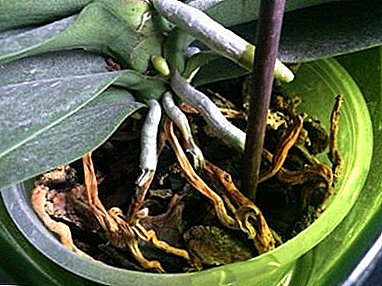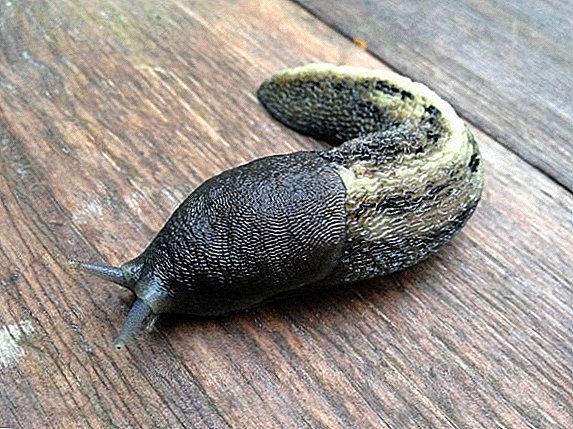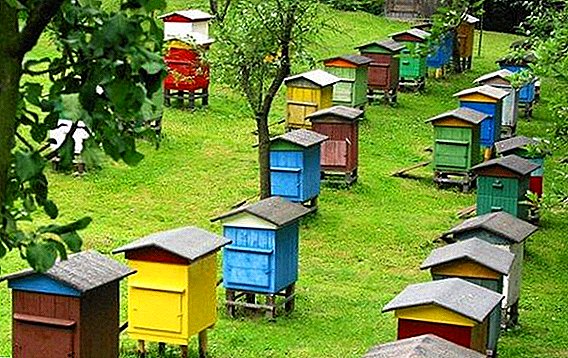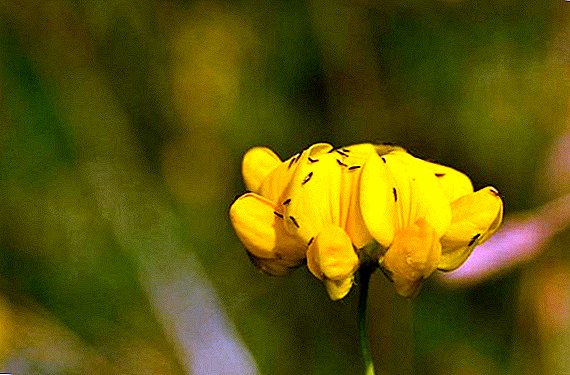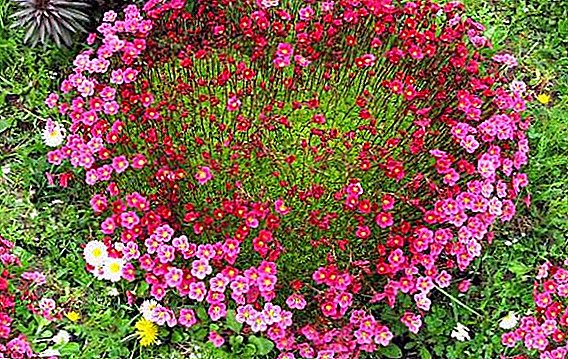 Ground cover plants are a real decoration for any garden. These perennials grow what is called "by themselves" and need minimal care. They are also indispensable in landscape design, as their decorative effect allows you to implement truly amazing ideas.
Ground cover plants are a real decoration for any garden. These perennials grow what is called "by themselves" and need minimal care. They are also indispensable in landscape design, as their decorative effect allows you to implement truly amazing ideas.
Iberis evergreen

Iberis evergreen or Iberian can be called one of the first heralds of the onset of spring. Quite often you can see how his green bushes make their way from under the thick layer of snow.
Ground cover perennials and their photos can be found in the catalogs of garden plants, but especially the perennial with the name Iberis stands out among them. This genus of herbaceous has 40 species of plants that are included in the cruciferous family.
Iberis evergreen forms thick and lush half-crochets, reaching 30 cm in height. As a rule, bushes grow very plentifully, because of which their diameter can reach one meter. Evergreen leaves, leathery.
During flowering white flowers bloom about 1.5 cm in diameter. Despite these small sizes, the number of flowers is quite large. Only one plant at a time can develop about a thousand flowers, because of which blooming iberis becomes like a white cloud. The flowering period begins in late April and ends in late May.

Iberis evergreen loves sunshine, able to tolerate only a slight shading. With a lack of light flowering is markedly reduced. You can grow in almost any soil, as long as it is not over-wetted.
Resistant to pests and diseases. Nevertheless, in the dry summer, Iberis may be subject to an invasion of earthy fleas. To get rid of pests is quite simple, for this you need to moisten the soil around the bushes a little more.
Did you know? Iberis flowers are used as an element of the wedding bouquet.
Sedum (Sedum)

The printed catalogs contain a lot of information about any ground cover perennials along with photos of these plants, but it is the perennial with the name of stonecrop (also known as Sedum) that is most widely used in landscape design. This view is distinguished by its “fleshy” leaf plates storage fluid. Thanks to them, stonecrop is able to grow even in dry places.
A scent is also valued for its medicinal properties, which differ depending on the type: stonecrop large, purple and prominent.
Sedum is light-requiring enough, undemanding to the soil. To protect perennials from possible rotting into the ground, gravel and sand must be applied. Sedig practically does not need dressing. Nitrogen fertilizers are dangerous, as they can cause the leaves, stems and the entire root system to rot. If you still need to make dressing, it is best to use phosphate-potassium fertilizer in a small concentration.
The flowering period begins in July and continues until the onset of frosts. Even when the first snow falls, the sedum is still covered with leaves. It is characterized by good winter hardiness and does not need special protection.
Important! In spring (April), when the perennial is put in order, care must be taken not to tear the overwintered leaves of the plant.
Carnation

Garden carnation is a very beautiful, fragrant flower, translated from Greek its name means "divine flower". This plant is very fond of gardeners, so it can often be seen on the backyards.
There are more than 300 varieties of carnations, but it is the ground cover that has an unusual combination of colors and shades. Arrangement of cut flowers is stored for a long time, exuding a wonderful aroma.
The most common types of carnations are: carnation travyanka, Turkish, Chinese, carnation Shabo.
Perennial carnation is a fairly unpretentious plant, so caring for it does not take much time and effort. The main thing is regular watering and timely removal of weeds.
It is also necessary to feed from special additives for flowers. Top dressing is made three times: in spring, when the first buds appear and when flowers bloom. After the carnation has faded, you need to carefully cut off the heads, and shorten the stems a little.
Carnation is an ideal perennial for landscape design, since it can decorate various flower beds, rock arias and alpine slides.
Creeping thyme

Thyme creeping, also known as thyme, is a perennial lodging shrub. It has numerous, thin, creeping stems that grow roots near the base with age. After that, they woody, forming rising or erect flowering shoots 15-20 cm in height.
Thyme leaves oblong-oval, petiolate, hard with strongly protruding glands and veins. The flowers are small, have a pinkish-purple hue, gather at the ends of the branches, forming a capitate, loose inflorescences. Fruits are small, spherical nuts of a black-brown shade.
This perennial is undemanding to the soil, tolerates summer drought and winter frost. The site for planting thyme should be well lit by sunlight, protected from cold winds and free from any weeds.
Creeping thyme is a ground-cover plant that forms a real green "carpet". During the flowering period, it is covered with numerous lilac-pink buds. Flowering lasts 2-2.5 months, during which thyme exudes a unique aroma.
Rock crab

Rock crab or alissum is a garden plant that belongs to the Cabbage family. Shoots quite branched and can reach 30 cm in height.
It has small, oblong-lanceolate leaves. Small four-petal flowers gather in dense racemes exuding a pleasant honey aroma. The color of the flowers has a white, yellow or purple color. Refers to ground cover plants that bloom all summer, it usually begins in May and lasts until late autumn.
An ideal place for planting is a sunny, dry, well-drained area. You can also grow burachek in the shade, but in this case, it will bloom insignificant. Neutral or slightly alkaline soils are suitable for this variety. The main thing is that the soil was not waterlogged.
Care for the groundrod is quite simple, as this perennial is very unpretentious. Care includes timely trimming and shearing. In the spring, it is necessary to remove the broken stalks and all dried parts of the plant. It is also desirable to get rid of weak twigs and last year's flower stalks. All this will contribute to the abundant flowering of perennial in the new season.
Kotula

Kotula is the common name for ground-cover perennials of the genus, including more than 80 species of plants of the Astrovye family. This native of the southern hemisphere is also called the "Golden Buttons" for its beautiful, small flowers of bright yellow color, reminiscent of many well-known daisy.
The brilliant foliage of the kotuly contrasts very nicely with the flowers. It usually blooms only once per season. During the flowering period the flowers of the cat become a source of beautiful fragrance. The maximum height is 20-25 cm.
This perennial will feel comfortable in the open sun or in a little shaded. Grows well in sandy, loamy or clayey soil, tolerates high humidity.
Important! Kotula very badly tolerates stagnant water in the winter-spring period.
Periwinkle

There are 6 species of periwinkles found in the wild in Europe, the Mediterranean, Africa and Asia Minor. Periwinkles are ground cover perennials with shiny, leathery leaves. Single flowers are located in the leaf axils.
Periwinkle also has healing properties, which is an additional reason for its planting.
Such ground-cover perennials blooming in summer retain a fresh look even under a layer of snow. Thanks to this quality, periwinkle has become a true symbol of vitality. The tribes of the ancient Celts even endowed this plant with mystical properties and called it "magical violet."
Periwinkles are undemanding to the location, they easily tolerate both bright sun and strong shading. But it is best to grow them in a small penumbra. This variety grows well in fertile, loose, well-drained soil.
For fertilizing, you can use mineral or organic fertilizers. As an organic fertilizer is best to use compost, humus or fallen leaves. This species is quite resistant to cold weather, but autumn frosts can harm young shoots. Also for winter, periwinkle can be covered with a small layer of leaves.
Saxifrage

The saxifrage is a perennial herbaceous rhizome plant. In the wild, it grows in temperate latitudes of the northern hemisphere, in the mountains (on alpine meadows). Usually kamnelomka reaches 15-20 cm in height. The root system is powerful, has a complex structure. Creeping stems are covered with rounded leaves, which are collected in a decorative rosette. The leaves can be covered with a small fluff, the color has both a light and a dark green shade.
The saxifrage need good lighting. The soil is undemanding, since in the wild they grow both on dense sandstones and on gravelly mountain slopes. The main thing is that the soil is well let in moisture and not dry.
Important! While planting saxifrage in the soil, you can add a little limestone rubble.
Loosestrife

Verbeinik received this name because of its similarity with the leaves of willow. Gardeners appreciate this plant because of its ease of planting and unpretentiousness in the subsequent care. Great for group landing. Loosestrife also allows you to create various combinations in the form of decorated alpine slides, rockeries, curbs and other landscape design elements.
Verbeinik has a straight stem and oval leaves, is capable of reaching a height of one meter. Flowering begins in late June. The flowers resemble small pyramids in their appearance. It is best to plant in the shade and in places with high levels of humidity.
Did you know? The Recruit is a honey plant.
Molodil (semservivum)

Rejuvenated grows in the highlands of Europe and Asia, mainly in the mountainous regions. This perennial can be found on its succulent leaves, which are ovate or oblong.
Cultivation of the young at the dacha will not be difficult. This plant is said to plant and forget.
Usually the leaves are pointed and ciliate along the edge. The flowers are collected in corymbose-paniculate inflorescences.
Molodil well tolerates the conditions of hot and cold climate. It is quite resistant to excessive moisture, but good drainage will not be superfluous. At the same time, all species of this plant are resistant to lack of moisture. Poor shading, pulling closer to sunlight, the plant loses its bright color and compact form.
Lamia

This perennial is common in Central Europe and Siberia. The long, recumbent stalks of the yarnotka form a solid green "carpet". The leaves have a heart-shaped base, and the top is covered with a beautiful marble pattern. Usually, the flowers of the claret tree are collected in the leaf axils. This species has one interesting feature - even at the beginning of winter, it retains green leaves.
It grows well in cool partial shade. This species loves moisture, however, even drought doesn’t harm much to the tree, which can quickly restore its decorative effect. It is not recommended to plant under the trees, because after a rain the foliage remains wet for a long time. This can lead to fungal and mold damage.
Care includes compulsory fertilizer with humus, as well as pruning of the shoots immediately after flowering.
Did you know? Young green yasnotki can be added to salads, borscht or soups, mashed potatoes. Young shoots can be preserved, and the roots are eaten instead of asparagus.
Primrose

Primula is a real "welcome guest" for many gardens. With the observance of the rules of planting, skillful cultivation and care, areas of open ground will turn into a real carpet of motley flowers. The height of a primrose can reach 30 cm. The inflorescence resembles a ball in its appearance.
The best place for planting is a shady area, although some alpine species feel good in the sun. The soil should be acidic or slightly alkaline. Organic matter and sand can be added to heavy soil. The soil around the primrose should be well hydrated. Make sure that the water does not fall on the leaves and does not stagnate in the ground, as this can lead to rotting.
Ground cover perennials are amazing plants that allow you to create beautiful and truly unique corners. With their help, you can arrange bright accents and make the garden unlike any other.


